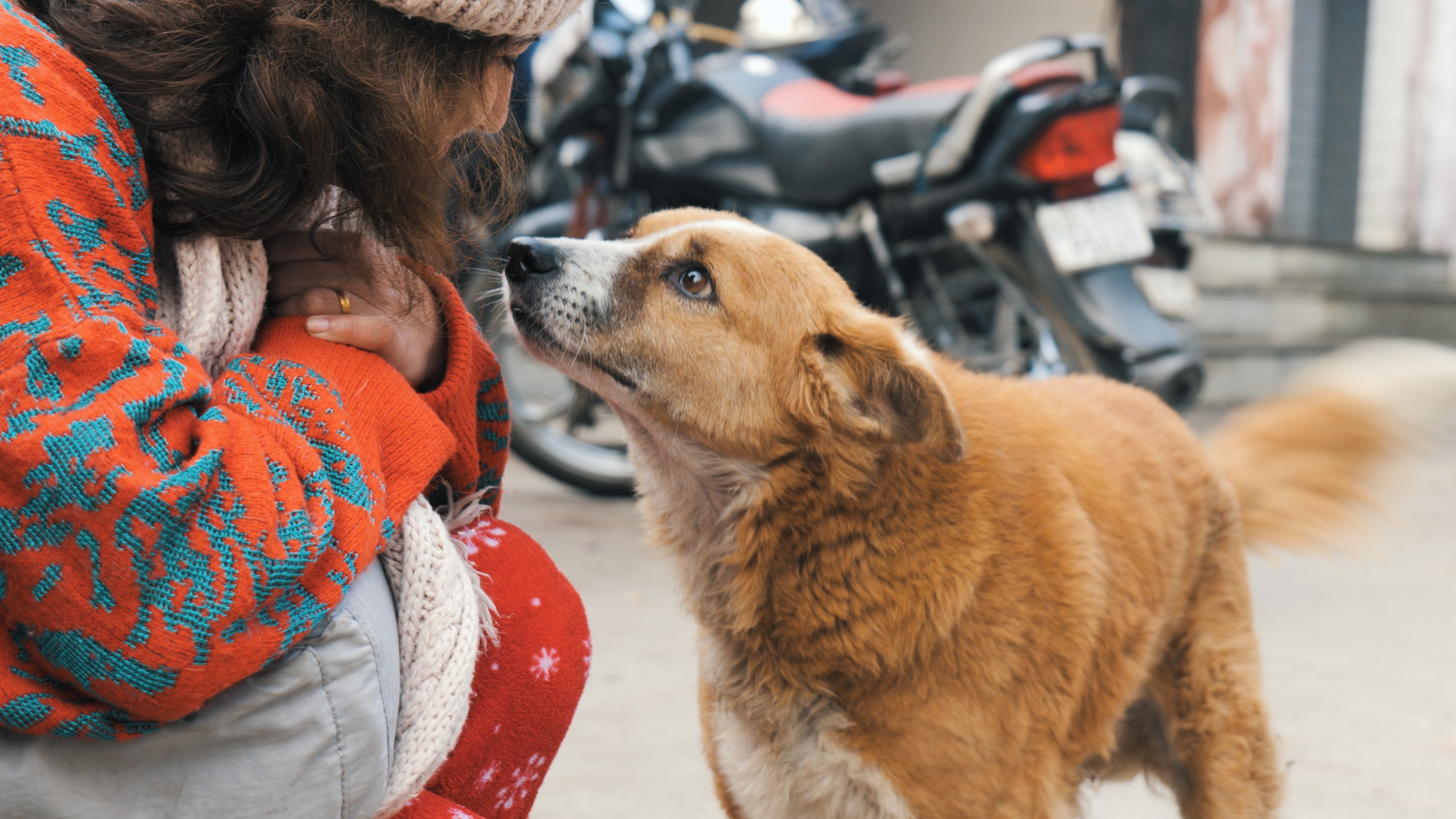COMMUNITY DOGS
Why Killing Street Dogs in India is Not the Solution
A study by the Federation of Indian Animal Protection Organisations (FIAPO) revealed that 48% of people bitten by dogs had either hit them or thrown stones at them.
The sight of a free-roaming pariah dog isn’t uncommon in India. Our opinions of them are as divided as they can be. People balance the scale between being a dog lover and a dog hater, with a vast majority falling somewhere in between – some open-minded, others not so much. It’s certainly not as black and white as that though. There are those sympathetic and affectionate with pets but cruel in varying degrees with street dogs.
The misinformation doesn’t help. And there’s a lot of misinformation. Social media influencers with millions of followers and subscribers have partaken in the conversation with selective research, omissions, and half-truths. Many traditional media channels plastered the news with sensational headlines, (to their credit, they rarely discriminated between pets and free-roaming dogs) offering information that bordered on being criminally false at worst, and vaguely true at best.
It's been the talk of 2022!
But let’s be real for a second here. We can’t deny that there are reported cases of dog aggression in several parts of India. Is it because dogs are unpredictable? Perhaps. Are they a menace? We don’t think so. But again, we can’t deny that there are reported cases of aggression. What’s the reason then?
Canine behaviorists cite common causes such as food aggression (a territorial reaction exhibited by dogs when eating), and aggression during the mating season as some of the reasons. Don’t get us wrong. These are valid and reasonable explanations. But perhaps there’s a bigger reason – something we’ve noticed a lot of people choose to ignore.
In a study, Remaking Zoöpolis: Human-Street Dog Cohabitation and Rabies Prevention in India, researchers from FIAPO (Federation of Indian Animal Protection Organisations) observed a strong correlation between negative interactions with dogs and human-dog conflict.
45% of people chased by dogs had hit or thrown stones at dogs
48% of people bitten by dogs had either hit or thrown stones at dogs

Positive interactions (caring, petting, feeding, or offering water), on the other hand, predictably negated conflict between humans and dogs. Interestingly, this held true for both people engaged in regular caregiving and those who only occasionally indulged in feeding or petting free-roaming dogs.
Why is this important?
Dogs are highly associative and experiential creatures. Bad experiences and trauma teach dogs to fear and doubt humans, to treat them with uncertainty. Yes. All humans. Even well-meaning people entrenched in the neutral middle between dog haters and dog lovers.
With apawfive, we’ve tried to encourage both sides to overcome their fear of the other. Humans for dogs. And dogs for humans. We feel that it is an important step we must take for a better future.
So far, the goal of street dog control measures in India (killing, institutionalisation to shelters, or birth control) has always been to eradicate or significantly reduce the free-roaming Pariah Dog populations. You might have heard it from friends, vigilantes on social media, or even the government, that the extinction of free-roaming dogs is the best solution to eradicating conflict, disease, and other issues attributed to dogs.
Interestingly, this couldn’t be farther from the truth.
Lessons from other parts of the world
Let’s start with the United Kingdom; they successfully eradicated all free-roaming dogs in the late 19th century. Despite the country being ‘technically’ rabies-free, there are other issues, often associated with street dogs in India, that are still widespread in the UK. Bites and mauling come to mind, with the only difference being that they are now caused by other animals, namely foxes and gulls. Yes. Foxes and gulls now occupy the ecological niches in the UK once occupied by free-roaming dogs. Nature is a tricky thing, you see.
The United States of America has a coyote problem. And in Canada, there’s an interesting hybrid called the coywolf that’s raised much concern.
It’s alarmingly funny – the trajectories of countries that have eliminated free-roaming dogs is proof to the fact that the problems don’t go away. All that changes is the animal involved.
In the study, Remaking Zoöpolis, researchers cited an additional concern in people losing the knowledge of cohabitation with animals. In India, we at least understand somewhat that we can coexist with dogs. We’ve grown up watching them, surrounded by them. It’s a reasonable assumption that the vast majority don’t wish them harm even. But in countries that have managed to eradicate free-roaming dogs, new animals appeared after some time – long enough for the people to have forgotten how to coexist with other animals.
From animal welfare organisations to local, state and even the national government, India needs to unite in understanding the best course forward in developing solutions for rabies control or the ballooning Pariah Dog population. Cruelty or ill-informed solutions might only just incur a debt from our balance with nature. And sooner or later, this debt will come knocking.



